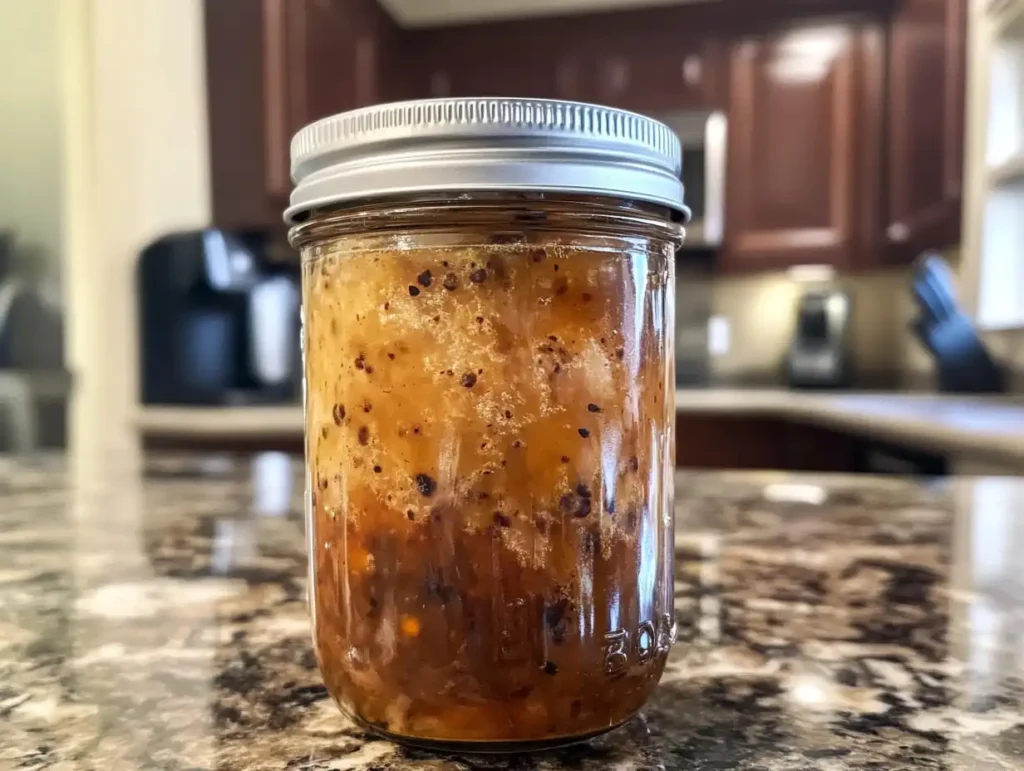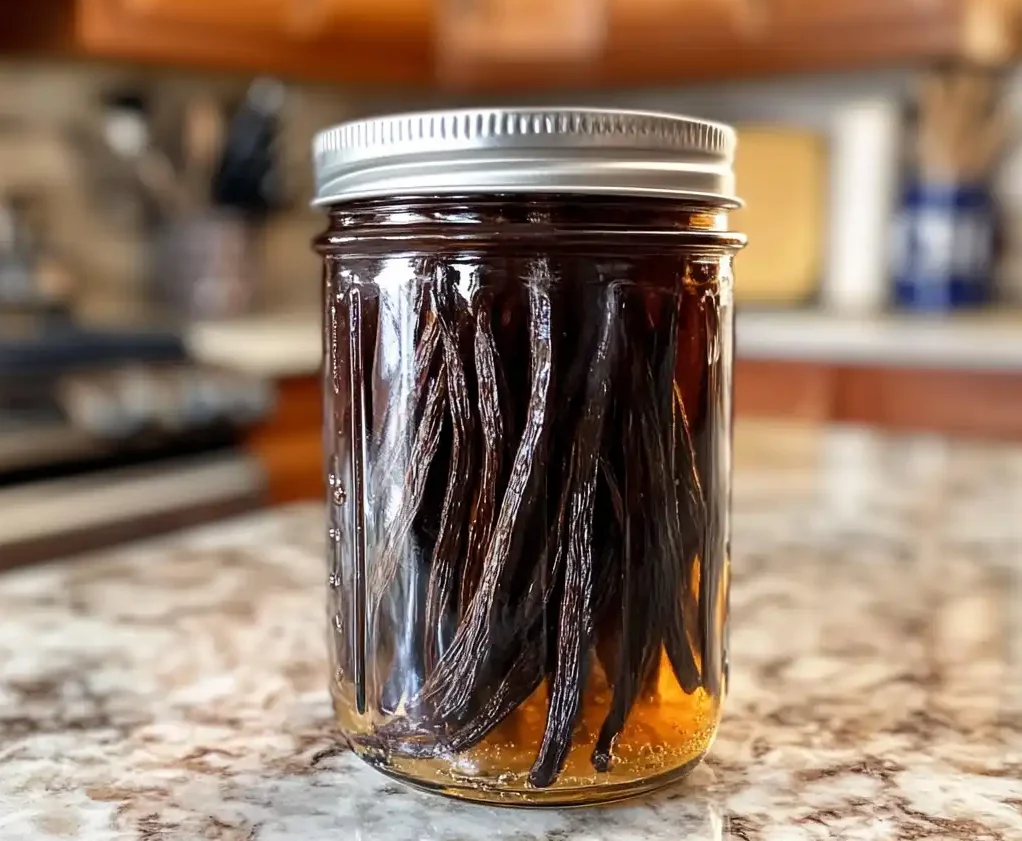Introduction
Vanilla bean paste is a popular ingredient among bakers and chefs, celebrated for its rich flavor and versatility. But does vanilla bean paste need to be refrigerated? Proper storage of this aromatic ingredient is crucial for maintaining its texture, flavor, and shelf life. Understanding whether refrigeration is necessary can help you get the most out of your vanilla bean paste and avoid spoilage.
One of the most common questions about this sweet and aromatic ingredient is whether it needs refrigeration. Storage methods can significantly impact its shelf life, texture, and flavor, making it essential to understand the best practices for keeping it fresh. In this article, we’ll explore whether vanilla bean paste requires refrigeration, its proper storage guidelines, and how to identify signs of spoilage.
What Is Vanilla Bean Paste?
Vanilla bean paste is a rich, syrupy blend made primarily from vanilla bean seeds, sugar, and a binding agent such as gum or syrup. Its texture resembles a thick sauce, and it is known for the visible specks of vanilla bean seeds that add visual appeal and authentic flavor to dishes.
This ingredient offers the best of both worlds: the bold flavor of pure vanilla beans and the ease of use associated with vanilla extract. Its concentrated nature makes it ideal for baking, desserts, and even savory dishes, requiring only small amounts to achieve a deep vanilla flavor.
Key Ingredients in Vanilla Bean Paste
The ingredients in vanilla bean paste significantly influence its storage requirements. Most commercial vanilla bean pastes are made with the following components:
- Vanilla Bean Seeds: These are the source of the paste’s signature flavor and aroma.
- Sugar or Glucose Syrup: Acts as a preservative and stabilizer, helping to extend the shelf life.
- Natural Thickeners (e.g., Gum Arabic): Provide the paste’s unique texture and consistency.
These ingredients collectively make vanilla bean paste shelf-stable for a period, but factors like exposure to air and moisture can affect its longevity.
How Vanilla Bean Paste Differs from Extract or Pods
Vanilla extract is an alcohol-based liquid made by steeping vanilla beans in ethanol and water, while vanilla pods are the dried seed-bearing fruits of the vanilla orchid. The main differences that affect storage are:
- Vanilla Extract: Alcohol acts as a natural preservative, meaning it rarely needs refrigeration.
- Vanilla Pods: Fresh pods require careful storage in airtight containers to prevent drying or mold.
Vanilla bean paste, being semi-liquid and containing sugar, has unique storage needs that sit between these two products. Understanding its composition is key to determining whether refrigeration is required.
Proper Storage Guidelines for Vanilla Bean Paste
Storing vanilla bean paste correctly is essential to maintaining its rich flavor, texture, and quality. While it doesn’t always require refrigeration, the specific storage conditions can vary depending on the manufacturer’s instructions, the paste’s ingredients, and the climate where it is stored.

Room Temperature Storage
For most commercial vanilla bean pastes, room temperature storage is perfectly acceptable, provided that the jar is tightly sealed and kept in a cool, dark place. Here are some key guidelines for storing vanilla bean paste at room temperature:
- Choose the Right Spot: Store it in a pantry or cupboard, away from direct sunlight, heat, or humidity. These factors can degrade the flavor and texture over time.
- Keep It Airtight: Ensure the jar is properly closed after each use to prevent air and moisture from affecting the paste.
- Shelf Life: Under ideal conditions, unopened vanilla bean paste can last up to two years, while opened paste typically remains fresh for about one year.
Refrigeration: When Is It Necessary?
Refrigeration is not always required for vanilla bean paste, but in some cases, it can help prolong its shelf life, especially if:
- The Climate Is Hot or Humid: In warmer environments, refrigeration can prevent the paste from becoming too runny or developing mold.
- The Paste Contains Minimal Preservatives: If the paste is made with fewer stabilizing ingredients, it may benefit from refrigeration after opening.
- It’s Homemade: Homemade vanilla bean paste, lacking commercial-grade preservatives, should ideally be refrigerated to maintain its quality.
Tips for Refrigerating Vanilla Bean Paste:
- Keep it in its original jar or transfer it to an airtight container to avoid moisture exposure.
- Allow the paste to come to room temperature before use to make it easier to measure and mix.
The Impact of Freezing Vanilla Bean Paste
While refrigeration can sometimes extend the shelf life of vanilla bean paste, freezing is generally not recommended. Freezing can alter the texture and consistency of the paste, making it difficult to use effectively in recipes. Additionally:
- Ice Crystal Formation: Freezing may cause ice crystals to form, diluting the paste when thawed.
- Loss of Flavor: Prolonged freezing can lead to a muted flavor, which defeats the purpose of using high-quality vanilla paste.
If you must freeze vanilla bean paste, consider portioning it into small, airtight containers to minimize waste and maintain freshness. However, this should only be done as a last resort.
Signs Your Vanilla Bean Paste Has Gone Bad
Even with proper storage, vanilla bean paste can degrade over time. Recognizing the signs of spoilage is crucial to avoid compromising the flavor of your recipes or risking potential health concerns. Here are some key indicators that your vanilla bean paste may no longer be suitable for use.

Changes in Texture
Vanilla bean paste typically has a smooth, syrupy consistency. Any significant deviation from this texture can indicate spoilage:
- Thickening or Crystallization: If the paste becomes overly thick or gritty, it may have been exposed to air or stored improperly. This doesn’t always mean it’s unsafe to use, but it can affect the quality.
- Separation: Liquid separating from the paste is a sign that the ingredients are breaking down. This often occurs in older jars or those stored in fluctuating temperatures.
Unusual Smell or Appearance
The aroma of vanilla bean paste should be rich, sweet, and unmistakably vanilla. Changes in smell or appearance can signal that it’s time to replace the paste:
- Off Odors: A sour or musty smell suggests that the paste has spoiled or developed mold.
- Discoloration: While slight darkening over time is normal due to oxidation, any unusual colors (e.g., green or white spots) indicate contamination or mold growth.
Changes in Flavor
If the paste smells fine but doesn’t deliver the expected robust vanilla flavor, it may have degraded due to age or poor storage. Using such paste in recipes can result in subpar taste or aroma, making it worth replacing for optimal results.
How to Handle Spoiled Paste:
- Do Not Use: Discard any paste that shows visible signs of mold or smells off. Consuming spoiled vanilla bean paste can pose health risks.
- Check Labels: Refer to the expiration date and storage instructions provided by the manufacturer.
Understanding these signs helps ensure that the vanilla bean paste you use in your recipes is always of the highest quality, delivering the rich flavor it’s known for.
Shelf Life of Vanilla Bean Paste
Vanilla bean paste has a relatively long shelf life compared to other perishable baking ingredients, thanks to its sugar content and stabilizers. However, its longevity depends on whether it’s stored properly and whether it’s homemade or commercially produced.
Manufacturer Recommendations
Commercially made vanilla bean paste usually comes with detailed storage guidelines and an expiration date printed on the jar. Manufacturers often recommend the following:
- Unopened Jars: Can last up to 18–24 months when stored in a cool, dry place.
- Opened Jars: Best used within 6–12 months after opening, depending on how well it’s stored. Always reseal tightly to prevent exposure to air and moisture.
- Refrigeration or Room Temperature: While most manufacturers advise against refrigeration, they may recommend it in hot or humid climates.
Tips for Maximizing Shelf Life:
- Use clean utensils when scooping out paste to prevent contamination.
- Keep the jar away from fluctuating temperatures, such as near a stove or in direct sunlight.
How Homemade Vanilla Bean Paste Differs
Homemade vanilla bean paste can be a delightful alternative to store-bought varieties, offering more control over ingredients. However, it lacks commercial preservatives, making it more perishable:
- Shelf Life: Typically lasts 4–6 months when stored in the refrigerator.
- Storage: Always keep homemade paste in an airtight container and refrigerate it to prevent spoilage.
Factors That Affect Shelf Life:
- Exposure to Air: Air introduces moisture and bacteria that can accelerate spoilage.
- Ingredient Quality: Higher-quality vanilla beans and pure ingredients can slightly extend the shelf life.
Does Expiration Mean It’s Unusable?
Vanilla bean paste often remains usable beyond its expiration date if it shows no signs of spoilage. Over time, however, its flavor and aroma may diminish, making it less effective for use in recipes.
When in doubt, examine the paste closely for any unusual smells, discoloration, or changes in texture before deciding to use it.
Frequently Asked Questions About Vanilla Bean Paste Storage
Can I use vanilla bean paste past the expiration date?
Yes, you can often use vanilla bean paste past its expiration date if it shows no signs of spoilage, such as mold, off smells, or unusual texture. However, the flavor may be less potent, so you might need to use slightly more to achieve the same intensity in your recipes.
How do I store opened vanilla bean paste?
Opened vanilla bean paste should be stored in its original jar or an airtight container, kept in a cool, dry place. If you live in a hot or humid climate, refrigeration can help maintain freshness. Be sure to reseal the jar tightly after each use to prevent air and moisture exposure.
Is vanilla bean paste better than extract?
Vanilla bean paste is not necessarily “better” than extract; it depends on your needs. Vanilla bean paste provides a richer flavor and visual appeal with its vanilla bean specks, making it ideal for desserts and recipes where texture and appearance matter. Extract, on the other hand, is more convenient for recipes requiring liquid or where visual specks aren’t needed.
Can I freeze vanilla bean paste?
Freezing vanilla bean paste is not recommended. Freezing can alter the paste’s consistency and may result in diluted flavor once thawed. If long-term storage is necessary, proper refrigeration is a better option than freezing.
How can I tell if vanilla bean paste is still fresh?
Fresh vanilla bean paste will have a smooth, syrupy consistency, a rich vanilla aroma, and a deep color with visible specks of vanilla bean seeds. If the texture has changed, it smells sour or musty, or there are visible signs of mold, the paste should be discarded.
Is homemade vanilla bean paste more perishable?
Yes, homemade vanilla bean paste is more perishable than commercial varieties because it lacks preservatives. It should always be refrigerated and used within 4–6 months for the best flavor and quality.
Conclusion
Vanilla bean paste is a versatile and flavorful ingredient that can elevate both sweet and savory recipes. While it doesn’t always need to be refrigerated, proper storage is key to maintaining its quality and extending its shelf life.
For most commercially produced pastes, storing them in a cool, dark pantry is sufficient. However, in hot or humid climates, refrigeration may be necessary to preserve its consistency and flavor. Homemade paste, on the other hand, requires refrigeration to prevent spoilage.
By following these guidelines and being mindful of signs of spoilage, you can ensure that your vanilla bean paste remains fresh and ready to use whenever inspiration strikes in the kitchen.
For more insights into the world of vanilla, you might find our guide on Do Vanilla Beans Go Bad? helpful—it dives into storage tips for keeping your vanilla fresh. Additionally, our comprehensive overview on Vanilla Bean Paste: Everything You Need to Know provides detailed information about its uses and benefits.
